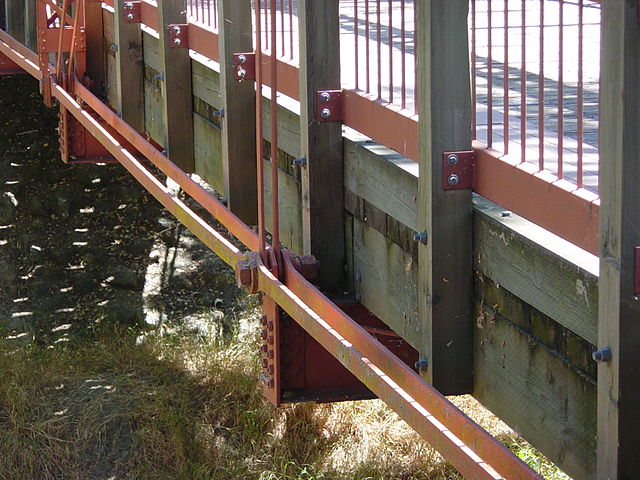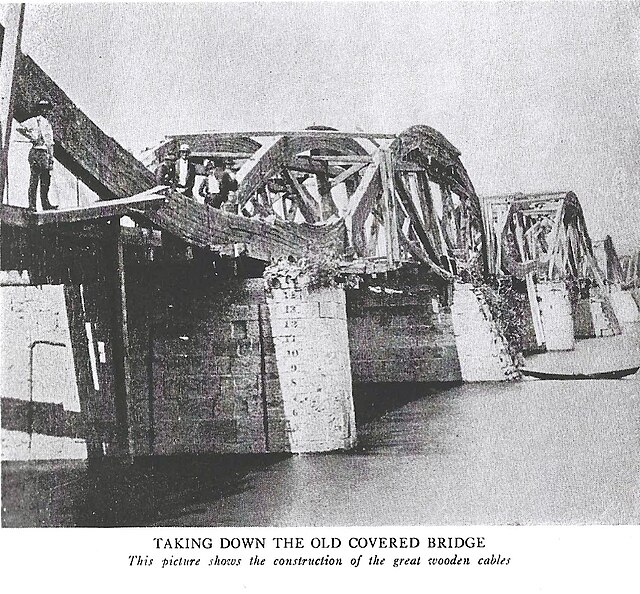In structural engineering and construction, an eyebar is a straight bar, usually of metal, with a hole ("eye") at each end for fixing to other components. Eyebars are used in structures such as bridges, in settings in which only tension, and never compression, is applied. Also referred to as "pin- and eyebar construction" in instances where pins are being used.
In this light truss bridge each side truss has 16 elements. Of these, seven are in compression and are fabricated as lattice beams. The remaining nine elements are only in tension and are composed of eyebars. Shear and bending forces are accommodated completely within the deck structure.
Detail view of pin joined eyebars on truss structure
A chain suspension bridge - Clifton Suspension Bridge
Detail view of the Clifton Bridge
A suspension bridge is a type of bridge in which the deck is hung below suspension cables on vertical suspenders. The first modern examples of this type of bridge were built in the early 1800s. Simple suspension bridges, which lack vertical suspenders, have a long history in many mountainous parts of the world.
The 1915 Çanakkale Bridge on the Dardanelles strait in Turkey, connecting Europe and Asia, is the longest suspension bridge in the world.
The double-decked George Washington Bridge, connecting New York City to Bergen County, New Jersey, is the world's busiest suspension bridge, carrying 106 million vehicles annually.
Chushul Chakzam, one of Thangtong Gyalpo's chain bridges, in 1904
The wooden 1808 Burr Suspension Bridge in Schenectady, NY, USA, during demolition in 1871, showing wooden cables. Spans of 160, 190, 180 and 157 feet on 3 piers began to sag, and 4 supporting piers were added in 1833 making 8 spans.








